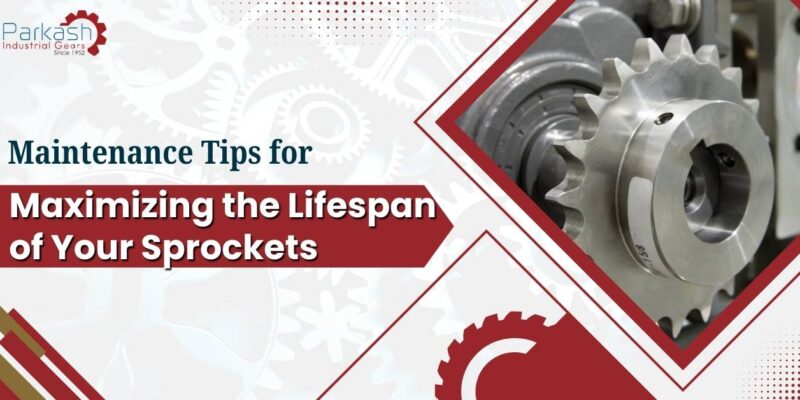
Maintenance Tips for Maximizing the Lifespan of Your Sprockets
Sprockets are crucial components in many mechanical systems, converting rotational motion into linear motion by engaging with a chain. To ensure these vital parts perform optimally and last as long as possible, regular maintenance is key. Here, we provide essential tips for maintaining sprocket gear, whether you’re using them in industrial applications or other machinery. Following these guidelines will help extend the lifespan of your sprockets and ensure smooth operation.
Understanding the Importance of Sprocket Maintenance
Sprockets are designed to withstand significant stress and wear over time. They play a critical role in the smooth operation of machinery by transferring power from the motor to various components. Proper maintenance is crucial to prevent premature wear, reduce the risk of failure, and ensure efficient operation. As a leading sprocket manufacturer, Parkash Industrial Gears emphasizes the importance of regular maintenance to maximize the lifespan and performance of sprocket gear.
1. Regular Inspection of sprocket gear
Visual Checks
Regular visual inspections are the first step in maintaining your sprockets. Look for signs of wear such as chipped teeth, corrosion, or deformation. Identifying these issues early can help avoid more severe problems later on. Inspect the sprockets for any signs of misalignment or unusual wear patterns that might indicate other underlying issues.
Check for Proper Alignment
Misalignment between the sprocket gear and chain can cause uneven wear and increase the risk of failure. Ensure that the sprockets are properly aligned with the chain or belt. Misalignment can lead to excessive strain on the sprockets and other components, causing premature wear.
2. Lubrication
Choosing the Right Lubricant
Proper lubrication is essential for reducing friction and wear between the sprocket gear and the chain. Select a lubricant that is suitable for the operating conditions of your machinery. For high-load applications, heavy-duty lubricants may be required, while lighter lubricants are suitable for lower-load scenarios.
Lubrication Schedule
Set up a consistent lubrication schedule according to the manufacturer’s guidelines and the specific operating conditions. Over-lubrication can attract dirt and debris, while under-lubrication can lead to increased friction and wear. Regularly check and apply lubricant to ensure optimal performance.
3. Cleaning
Removing Dirt and Debris
Dirt and debris can accumulate on sprockets, leading to accelerated wear and potential damage. Regular cleaning is necessary to remove any buildup that can affect the sprocket’s performance. Use appropriate cleaning agents and tools to avoid damaging the sprockets.
Preventing Corrosion
Corrosion can weaken sprockets and reduce their lifespan. Regular cleaning helps prevent corrosion by removing moisture and contaminants. Apply anti-corrosion coatings if necessary, especially in environments prone to high humidity or exposure to chemicals.
4. Replacement and Adjustment
Timely Replacement
Sprockets should be replaced when they show signs of significant wear, such as excessive tooth erosion or deformation. Continuing to use worn sprockets can lead to further damage to the chain and other components. Regular inspections will help determine the right time for replacement.
Chain Tension
Proper chain tension is crucial for the longevity of both the sprocket and the chain. An overly tight or loose chain can cause uneven wear on the sprocket teeth. Adjust the chain tension according to the manufacturer’s specifications to ensure smooth and efficient operation.
5. Documentation and Record-Keeping
Keeping detailed records of maintenance activities, including inspections, lubrication, and replacements, helps track the performance of your sprocket gear and identify patterns or recurring issues. This documentation is valuable for planning future maintenance and ensuring that all components are operating within their optimal parameters.
Conclusion
Maintaining the lifespan of your sprockets involves a combination of regular inspections, proper lubrication, cleaning, and timely replacements. By following these maintenance tips, you can ensure that your sprockets, whether from Parkash Industrial Gears or other suppliers, continue to perform efficiently and last longer. Proper care not only extends the life of your sprocket gear but also contributes to the overall reliability and efficiency of your machinery. Regular maintenance is an investment in the longevity and performance of your equipment, helping you avoid costly repairs and downtime.

 FSC India.
FSC India.
This Post Has 0 Comments